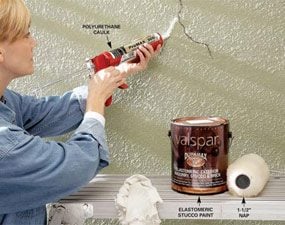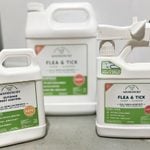Home Care Myths Busted!
Updated: Feb. 24, 2023Experts weigh in on common myths and misunderstandings.

Myth 1: Laundry bleach is the best product to remove mold and keep it from returning.
EPA researchers compared 12 over-the-counter cleaning products with diluted household bleach. They used each product to clean the mold on individual samples of painted and bare gypsum drywall. Then they stored the samples under ideal mold growing conditions and monitored them to see how much mold returned. Diluted bleach scored the worst on bare (unpainted) drywall. It fared better on painted drywall, but not as well as the leading cleaning product, full-strength Lysol All-Purpose Cleaner Orange Breeze. The researchers also tested the cleaners on wallpapered samples and mold-inhibiting paints. To read the research paper, go to link.springer.com and search for “wallboard microbial.”
Myth 2: Cheese is the best bait for mousetraps.
Cheese isn’t on any mouse’s “top-10 list.” They’ll only eat it if nothing else is available. Plus, cheese hardens after sitting out for a while, making it easier for mice to “steal” the bait without setting off the trap. The perfect bait is actually peanut butter or bacon, or a blend of peanut butter and bacon grease. Mice can’t resist the smell and taste. So wipe that on the trip mechanism to get the greatest number of “catches.”
Myth 3: The best time to water grass is in the evening so the water doesn’t evaporate.
Evening watering does reduce evaporation, allowing the soil to soak up and hold more water. But it also sets up the perfect growing conditions for mold and other lawn diseases. The best time to water your lawn is in the early morning hours as the sun is rising. Late riser? Use a watering timer. By the way, an impact sprinkler is the most efficient type of sprinkler. Avoid sprinklers that shoot fine spray or streams into the air—the water evaporates quickly.
Misunderstanding 1: You should never paint stucco.
Ordinary house paint seals the pores on stucco. And as the stucco expands and contracts, the paint cracks, breaking the seal. Then water enters the stucco, gets trapped inside, and pretty soon the paint starts to delaminate. It doesn’t take long before you’re left with sections of bare stucco and patches of paint—not a pretty sight.
However, you can use elastomeric paint, which is formulated for stucco. It expands and contracts with the stucco and resists cracking (one brand is Valspar Duramax Elastomeric Exterior Masonry and Stucco Paint). Elastomeric paints also breathe, allowing moisture to get out. The best part: DIYers can apply it themselves.
If you don’t want to paint your stucco, consider hiring a contractor to “fog” it. Fogging contractors use a special spray gun that combines a colorant with a thin cement slurry. Fogging is much faster and cheaper than dashing and lasts almost as long.
Myth 4: Duct cleaning is something that should be done regularly.
Most homes never need duct cleaning. There are some exceptions, however. If you find mold, or rodent or insect nests in the ducts, eliminate the source of the contamination or infiltration and have the ducts professionally cleaned and disinfected. Expect to pay $350 to $1,000 for a thorough job that includes scrubbing the ducts with special brushes. Avoid cheap duct cleaning “specials” for $100 or less. Those low-cost services usually just blow compressed air through the ducts. That gets the loose dust moving, but it doesn’t clean the mold or rodent or insect residues. Find out the cost of air duct cleaning.
Myth 5: You should twist the wires before you put on the wire nut.
This advice comes right from the wire nut manufacturers. You do NOT have to twist the wires before applying the wire nut. Most high-quality wire nuts incorporate a square-cut spring-steel wire that literally bites into the copper wires as you twist it on. The spring wire expands and contracts as the electrical wires heat and cool, keeping them tightly bound. Continue twisting the wire nut even after it “hits bottom.” Keep turning the nut until the wire insulation is twisted 1-1/2 in. past the wire nut.
Note: Some lighting fixtures come with wire nuts that don’t have a spring-steel wire insert. Toss those freebies and use only high-quality wire nuts that have a wire insert.
Myth 6: Leaving my computer on all the time makes it last longer.
This myth had some basis 20 years ago when hard drives bit the dust early from frequent on/off cycles. It’s no longer true. From a power-use standpoint, leaving it on ALWAYS uses more power than shutting it off—even when it’s in “sleep” or “hibernate” mode. Leaving it on also increases your risk of catastrophic damage from power surges—even with a surge protector. So turn off the power strip or unplug your computer when you’re not using it.
Misunderstanding 2: A dielectric union is all I need to protect my water heater from electrolysis/ galvanic action.
Anytime you join two dissimilar metals (such as copper and galvanized pipe) and add water, you create a flow of electrons (electrolysis or galvanic action), that eventually destroys the galvanized pipe. For decades, plumbers have used an insulated dielectric union to prevent the damage. A dielectric union does provide a small measure of protection. But it’s not enough to prevent the complete failure of the galvanized pipe (top photo). Lab tests show that a 3-in. dielectric nipple reduces current flow by 85 percent over the use of a dielectric union alone. So, next time you install a water heater, install a dielectric nipple in addition to a dielectric union. Buy them at a plumbing supply store or contact the manufacturer (perfectioncorp.com) to find a local distributor.
Huge Myth!: Setback thermostats don’t save money.
Sure, the furnace has to pump out a lot of BTUs to bring the house back up to the daytime temp. But studies have proven beyond a doubt that the fuel savings during the setback period far outweighs the cost of raising the temp again. Set the temperature back at least 5 degrees at night and 10 degrees during the day (when no one is home) and you’ll save 20 percent on your heating/cooling bill (raise the temp by the same amount for cooling in summer). That will more than pay for the cost of the setback thermostat in the first year.
Misunderstanding 3: Use hot water when you run the food disposer because it melts the grease to prevent clogs.
Sure, hot water melts the grease and washes it down the drain. But once the liquefied grease hits the pipes, it cools, solidifies and eventually builds up. The grease is a magnet for food bits, lint and hair, eventually clogging the pipe. And those clogs are so far away you can’t reach them with a household snake. Calling in a pro to clear the line will cost you about $150. Cold water, on the other hand, solidifies the grease before it hits the sewer line, so it can float all the way to the city sewer. Cold water also cools the disposer motor, making it last longer.
Myth 7: Dethatching my lawn every year is good for it.
Power dethatching is never good for your lawn. It may feel good to run a 5-hp monster power rake through your lawn and see it throw out huge piles of thatch. But if you’ve set the machine low enough to reach the thatch layer, you’re really tearing up healthy grass and stressing the remaining grass. Thatch buildup is the symptom of a serious problem, not the cause of it (the cause is overfertilization, too much water and shallow roots). Instead of dethatching, experts recommend solving the underlying problem by cutting way back on nitrogen fertilizer. Next, rent a core aerator and run it across your lawn. Then apply a product such as Natural Guard Soil Activator. Buy it at any garden center. The soil activator literally composts the existing thatch and turns it into useful nutrients for your lawn. By aerating your lawn and applying soil activator, you help the grass establish a deep root structure— the key to a healthy and thatch-free lawn.












